Introduction
Executive Summary
Most of the time a student may want urgent assistance from the doctor concerning a disturbing issue that needs quick attention but it may be difficult to find the lecture in his office. With regards to this problem, we came up with a project that will help the student communicate with the doctor as soon as they need him. Most doctors do not consider giving out their mobile number to students as a necessity as they may argue if the student needs help he/she should consult them during the time set aside for consultation. To solve this problem we came up with a system that can allow the students to leave a message in form of a text to the doctor if they do not find him in the office. The project is fixed in the doctor’s office whereby the student types the message using an alpha-numeric keypad and the message is displayed on a Liquid Crystal Display (LCD) screen which sends the message to the Global System for Mobile (GSM) kit which will later send the message to the doctor’s mobile phone. To accomplish this project we used a microcontroller that controls the entire operations of the system
Problem definition
As I walked into the doctors’ office one day, I met one of my fellow students really stressed out because he needed urgent attention to his grades before the school closed but he couldn’t find the particular doctor. We sat down with him and decided to look for a way we as students could help ourselves out in such situations. Since the doctors couldn’t give us their mobile numbers we looked for an alternative way in which we could communicate with them, hence we came up with the idea. By having this system the doctor does not give his number to the students directly but the number is stored in the system only by the system’s administrator. The project does not allow the student to leave voice messages or make voice calls to the doctor, it only allows for message services. It also does not allow for the student to make voice calls or leave messages to anybody else like friends or other doctors but only to the doctor it was assigned to.
Project objective
The main objective of this project was to give the a students better communication system with their doctors, for the case of a student missing the doctor in his office the student will be able to send the doctor a message that he needed his help. The other objective was to ease communication between the student and the doctor, the doctor will not be afraid that his number is out there with the students and they could use it for malice or the wrong reasons and also since the messages once sent are saved in the system it will be hard for the student to leave abusive or inappropriate messages for the doctor since they will be afraid to be caught and have to face severe consequences.
The other objective of this project will be to enhance the communication system in the entire school. Since the messages are saved in the system, there is evidence of a student complaint is not attended to and the administration will be able to follow up on the project.
Project background
Situations of students wanting to communicate with their doctor but cannot find them are a common occurrence in most institutions. Previously doctors have been given pigeon holes where indirectly, it represents a post office in which the students write the doctor a handwritten note of what they wanted and leave it in the doctor’s pigeon hole. This method was not reliable as the documents could disappear or the doctor might forget to check their pigeon hole hence the student’s message will not reach the doctor.
The other alternative was students slipping notes under the doctor’s offices door or through a hole that is left on the door. In this case chances of the message being lost or distorted were very high. By coming up with this project we believe we will be able to aid communication between students and their lectures. Flow of information around the college will be better.
These methods used earlier had the advantage of being cheaper and easy to implement. Even though our project is more effective it is quite costly to implement as one has to buy the equipment needed. These alternatives also did not require any training to be done to the users as it was used of mere common sense. Our project will require the students and the doctors to be taught how to use the new project.
Specification Development
The project specifications were well defined and the particular devices to be used identified. It is made up of an LCD screen display of type HDM16216H-4, Global System for Mobile GSM-kit of type SIM 300 module, an alpha-numeric keypad and the microcontroller of type pic16F884. The micro-controller controls the entire operations of the system. It is used to simplify communication as it can communicate with the GSM kit. It also has a simple program developed by a simple programming language. The LCD screen is used by the students to view the message they have written to the intended doctor before sending to ensure what they have keyed in is the correct information. The equipment specification was developed through the comparison of different suppliers and their reliability. The microcontroller and the LCD were regulated and modified to fit this specific project. The controller consists of a transformer, a rectifier, an electricity regulator and power switches to feed the project. The battery syndicate is fed with the power supply that comes from the company that provides the syndicate.
Design Specifications & Constraints
“Design specifications and constraints respectively stand for non-functional requirements that the final product should meet and restrictions the designer is faced with.”(Namahn) “The design constraint refers to any relevant assumptions, limitations, or constraints for this component. This should include constraints on timing, storage, or component state, and might include rules for interacting with this component (encompassing preconditions, postconditions, invariants, other constraints on input or output values and local or global values, data formats and data access, synchronization, exceptions,”(Appleton)… the list is endless. Making out every design limitation is of utmost significance as it enables one to obtain the required necessities in terms of equipment needed so as to avoid problems when one begins to design the system.
We required both hardware and software in order to accomplish this project. The hardware included: LCD screen display, alphanumeric keypad and a GSM kit. For the software, this was the program that was developed for the microcontroller unit, which is used to complete the entire operations of the system.
The resources were easily available and regulated in order to fit the project specifications. We opted to use a numeric keypad as the alphanumeric one was not readily available in the market. All other requirements were available from local suppliers. It was considered expensive to import the alphanumeric keypad and since we have not implemented the project already, for development purposes we used the particular pieces listed below:
The equipment has the following design specifications
LCD Screen Display. Type HDM16216H-4
The LCD screen has the following features
16 Characters x 2 Lines, Large Character LCD Screen Display
Character Format 5×7 Dots with Cursor
Backlight EL Optional
Options….TN/Gray STN/Yellow STN, 12 o’clock/6 o’clock View
Normal/Extended Temperature
Normal/Negative Displays
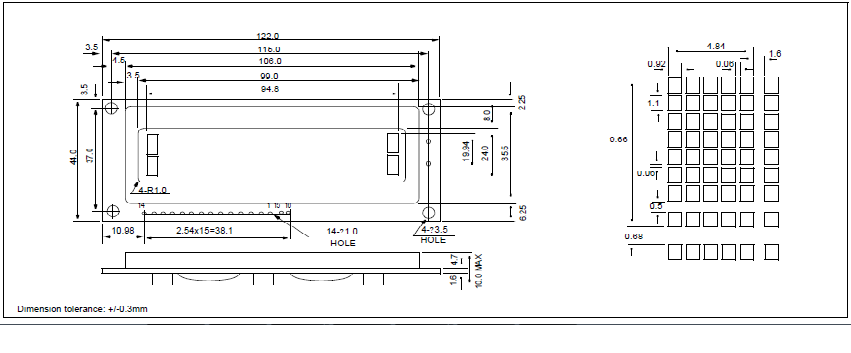
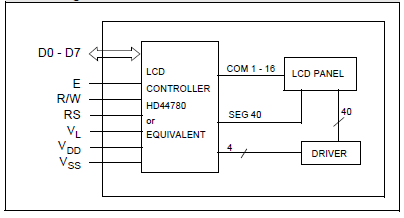
MicroController Unit of type Microchip PIC16F884
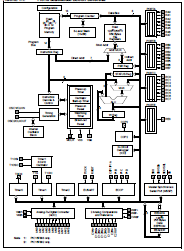
In the micro control unit The Analog-to-Digital Converter (ADC) allows conversion of an analog input signal to a 10-bit binary representation of that signal. This device uses analog inputs, which are multiplexed into a single sample and hold circuit. The output of the sample and hold is connected to the input of the converter. The converter is used to
Generate a 10-bit binary result through a successive approximation and store the conversion result into the ADC result registers. When configuring and using the ADC the following functions must be considered:
- Port configuration
- Channel selection
- ADC voltage reference selection
- ADC conversion clock source
- Interrupt control
- Results formatting
The Program Counter (PC) is 13 bits wide. “The low byte comes from the PCL register, which is a readable and writable register. The high byte (PC<12:8>) is not directly readable or writable and comes from PCLATH. On any Reset, the PC is cleared. The PC is loaded on a write to PCL (PCLATH<4:0> → PCH).
The PIC16F884 has a 13-bit program counter capable of addressing a 2K x 14 (0000h-07FFh) for the PIC16F882, 4K x 14 (0000h-0FFFh) for the PIC16F883/PIC16F884, and 8K x 14 (0000h-1FFFh) for the PIC16F886/PIC16F887 program memory space. Accessing a location above these boundaries will cause a wrap around within the first 8K x 14 space” (datasheet). The Reset vector is at 0000h and the interrupt vector is at 0004h
“The STATUS register contains:
- The arithmetic status of the ALU
- The Reset status
- The bank select bits for data memory (GPR and SFR)
The STATUS register can be the destination for any instruction, like any other register.”(Mikroelektronika) “If the STATUS register is the destination for an instruction that affects the Z, DC or C bits, then the write to these three bits is disabled. These bits are set or cleared according to the device logic. Furthermore, the TO and PD bits are not writable. Therefore, the result of an instruction with the STATUS register as destination may be different than intended.”(Bingj.com)
Global System for Mobile (GSM-kit) of type Quick Stars SIM 300 Module.
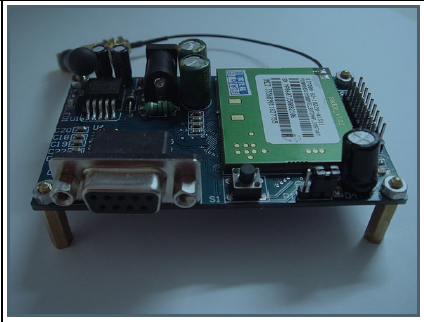
Economically the project is cost-effective. As much as it may be complex to install and implement, economically the project helps the users cut down on communication costs. The installation fee is a bit but it is only incurred once and only once. The needed equipment is readily available in the market hence the importation costs will not be incurred. Effective communication is the key to the success of every organization; hence the returns from implementing this system are more than the actual cost incurred to install it.
The equipment uses radio and micro-waves signals to transmit information. Though these kinds of waves may be considered to be at times harmful to living organisms they have no negative effects on the environment. According to the environmental policy, we should all try to make products that only have positive impact on the environment. This project causes no harm to the environment.
Our project is meant to help enhance communication within the school premises thus promoting social interaction between the student and teacher. It creates a social setting whereby the student can freely communicate with the doctor without the doctor having to feel insecure. Ethically this is also in line with the society’s beliefs. The society at large believes that the relationship between a student and doctor is that of a senior and a minor hence a minor will not be allowed to get the doctor’s number on regular basis. By implementing our project the relationship between the doctor and student remains only professional.
Our project will be able to sustain itself and sustain the flow of information within the institution. Its sustainability is worth implementing the project. Generally speaking as much as we came across several constraints during the design of this project like the lack of alphanumeric keypad in the market and leading us to use a numeric keypad like for the mobile phone and again the implementation of the LCD Screen one was not able to view the message before sending it. This project will cost a lot to implement as each doctor’s office will need its own stand-alone project but the general returns in the long run are worth trying.
Validation Procedure
The main objective of this project was to give the a students better communication system with their doctors, for the case of a student missing the doctor in his office the student will be able to send the doctor a message that he needed his help. The other objective was to ease communication between the student and the doctor, the doctor will not be afraid that his number is out there with the students and they could use it for malice or the wrong reasons and also since the messages once sent are saved in the system it will be hard for the student to leave abusive or inappropriate messages for the doctor since they will be afraid to be caught and have to face severe consequences.
The other objective of this project will be to enhance the communication system in the entire school. Since the messages are saved in the system, there is evidence of a student complaint is not attended to and the administration will be able to follow up on the project.
We had a checklist to validate if our requirement specifications were met we also tried some experiments to prove that we used the particular specifications to achieve the desired expectations.
Preparation of the Environment to be used in the project: If you use a Universal Serial Bus (USB) Serial Cable, make sure the driver for your Operating System (OS) is installed. We used a USB Serial Cable in this project. Check if all the equipment with the correct specification are ready: SIM 300 GSM-kit, HDM16216H-4 LCD Screen Display, Microchip PIC16F884 microcontroller unit and a numeric keypad
Make sure that the correct program for the microcontroller is ready for use and installed in the machine
Ensure there is a database for the doctors’ mobile phone numbers with a not null primary key
Ensure that there is a working connection between all the equipments
With this checklist available to confirm if everything is in order we assembled all the equipment to a working project and it was ready for experiment. We experimented by saving one of our numbers to the GSM kit. Checking if the keypad was working and sending the message and it worked. It is was bit difficult to use at fast because of the keypad since it requires one to hold the numeric keys for a particular duration so as to get an alphabetic character or key.
The following are some of the validation tests that we included in the validation check policies
- A doctor’s mobile number must be present.
- The number must be unique within the current dataset.
- For the message to be sent the recipient must be within a certain range.
- The mobile phone number in the database must be one of a certain set of values (numerical).
- For the message to be taken from the keypad to the LCD Screen to the GSM kit it must match a certain pattern.
Conceptual Design
Introduction
In most cases it is not possible for the doctors to give us their mobile numbers hence we encountered that problem, if you need the doctor’s help and you do not find him in his office there was nothing one could do about it. Hence, we looked for an alternative way in which we could communicate with them; hence we came up with the idea. By having this system the doctor does not give his number to the students directly but the number is stored in the system only by the system’s administrator. The project does not allow the student to leave voice messages or make voice calls to the doctor it only allows for message services. It also does not allow for the student to make voice calls or leave messages to anybody else like friends or other doctors but only to the doctor it was assigned to. The goal of our project was to allow students to leave doctors a message just in case they needed their help but could not find them in the office. The doctor does not have to worry that his number has been distributed to the students and could use it for malicious purposes because the number is only stored in the system. The specifications of the system are to allow it to be able to send a message to the recipient. This message is input through the numeric keypad displayed by a LCD Screen and sent to the desired recipient through a GSM kit.
Alternative Solutions to the general problem
Missing a doctor in his office during hours that are not consultation hours is something that is very common in a school setting. Previously doctors were given pigeon holes that are more like mailboxes whereby students can leave messages assignments or any other information they would like to leave for their lectures. This is the easiest way to solve the problem as it is cheap to implement which is one of its major advantages. However, this method has more cons than pros. One it is easy for the files to be lost when they are left there as anyone out of malice or unknowingly could pick them. When this happens the message does not reach the desired recipient instead it gets lost and there is no evidence that the sender actually left the message. The other disadvantage is students could take advantage of the situation they could insist they left a message when they left none actually. Lastly but not least it is a bit difficult to remember the pigeon numbers of all your lectures unlike our system whereby the number of the lecture is saved in the system
The other alternative solution was to slip the message under the doctor’s door or through a passage that was left on the door specifically for that purpose. Similar to the pigeon hole method this method also has the same disadvantages. To add to that both the methods include having the message handwritten which is also a disadvantage in that one’s handwriting may not be readable to the other person. They also involved a lot of paperwork which could also be termed as clutter. In a situation whereby the message comes to your mobile phone’s inbox it is easier to store and retrieve the message later on as compared to small pieces of paper.
This system is not necessarily the best possible solution but considering the rate at which technology is evolving it is a system that is worth implementing and would go a long way in improving the universities communication system. We are heading to a paperless world and it is a paperless system.
Relevant alternative solution
With regard to the objectives our project is an alternative relevant solution. The goal is to provide a way for students to communicate to the doctor and yet maintain professionalism. Our project also has its own pros and cons. The major disadvantage is that the project is quite expensive and very complicated to implement, though is a one-time experience as the implementation process is only once and maintenance is not expensive at all. The other disadvantage is that some people may not be technologically competent hence there needs to be training which is also an expense on its own. Despite the few mentioned cons the advantages of the project outweigh the disadvantages. One of the greatest of all advantages is that it will simplify communication between the doctors and the students. It will help reduce clutter and a lot of paperwork in the doctors’ offices. It will also ensure that the message reaches the intended recipient hence it will be easier to investigate matters that are not attended to as there is evidence.
Our project works by inputting the message on the keypad which is displayed on the LCD screen the microcontroller controls the entire operations. The message is sent to the GSM kit which is later sent to the intended recipient. The diagram below shows how a message is sent.

Design Methodology
In this section we are going to explain the steps we took in implementing our project. After identifying the requirements and specifications, we went ahead to combine them into an operating system. A message is an input using the keypad; it is displayed on the LCD screen to allow the student to edit and proofread before sending the message. The message is taken to the GSM kit so that it can be sent to the intended recipient.
The diagram below is used to explain how the operation takes place. The keypad is connected to the microcontroller through pins. The LCD screen and GSM-kit are connected to the output pins.
We are using the microcontroller PicP16F884 to contact and control with the LSD screen, numerical keypad and GSM kit.The GSM kit is communicated to by using the serial port RS232 (by C6 and C7),and the other things, the LCD screen and keypad are communicated to by using the other pins in the microcontrollers.
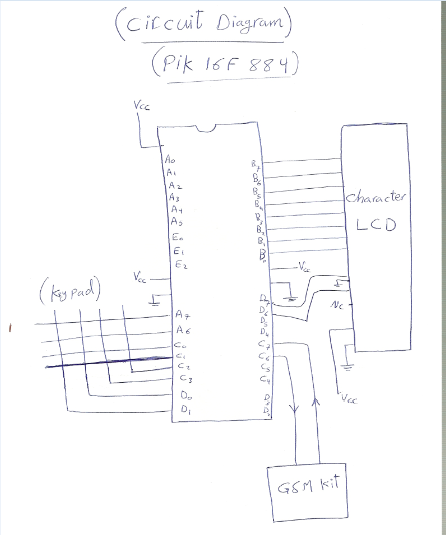
The LCD screen shows numbers and letters.2*16 means it show only 2 lines maximum and 16 letters or numbers.It is connected to pins on the micro controller D6 & D7 & B0 & B1 & B2 &B3 & B4 & B5 & B6 & B7.
The Keypad uses a matrix connection. The raw connects to pins on the microcontroller A7 & A6 & Co & C1. The column connects to the pins on the microcontroller C2 & C3 & Do & D1.
The Microcontroller has 35 inputs and outputs We have more pins more we need but we have to use this model because if another student came to us and wanted to develop the device we would be able to do it without making a new design, and the cost of the would range about 2$ and the difference between this and the microcontroller that has fewer pins is 0.1 $.It needs a power supply of 5V, Pic16F 884.
How to configure the GSM-kit
In order to configure the GSM kit you need, a SIM300 Module, a Magic Port Voice adapter, a DC 12V Power Supply, a SIM Card, a Serial Cable (RS232) and a computer. If you are going to use a USB Serial Cable, make sure the driver for your OS is installed. For the serial communication cable we used hyper terminal which is embedded in Windows XP. For UNIX one can use Putty. You need a valid SIM Card with sufficient credits.SIM with GPRS service is needed if you want to do the GPRS Connection. Make sure the power supply is DC12V, Center Positive with a Maximum current of 2A preferred. Finally connect the magic port to the SIM 300 module. The following are the steps to follow when connecting your GSM kit to the computer and configuring the settings.
- Open the Hyper terminal for windows or putty for UNIX
- Open a serial connection with the following settings
- Baud rate: 38400bps
- Data bits: 8
- Parity: None
- Stop bits: 1
- Flow Control: None
- Stop bits: 1
- Power up the SIM 300 Module
- Enter AT (and press “enter”. If you see a response text “OK” then the communication is okay after which hit
- Enter AT+CREG? And press enter.
After this if you see a response “+CREG: 0, 1”, the network registration is completed.
How to send a text using the GSM-kit
- Enter AT+CMGF=1 and press “enter”. If you see a response “OK”, text mode is now selected
- Enter AT+CMGS=”12345678”. If you see “>”, you can enter the message contents now.
- Enter message contents
- Enter “Ctrl” + “Z” when you finish typing the contents and then the message is sent.
These procedures are programmed into the microcontroller so that one does not have to do them manually. The GSM kit is the heart of the operations of the system and is the only one that requires configuration.
Project Tasks and Timetable
- Activity: Problem Definition
- Time Allocated: 2 weeks
The design of every project starts with the problem definition. This is whereby we identify the problem and the solutions we have at the moment, the possible solutions are picked, the solution that we thought would benefit us all.
- Activity: Design Specification and Constraints
- Time Allocated: 4 weeks
This is where we identify the requirement specifications and possible constraints that could come about in the implementation of this project. We were also able to identify ways in which the project affects our society both positive and negative.
- Activity: Canvassing of all materials
- Time Allocated: 1 Month
Canvassing of raw materials, supplies and equipment could be accomplished in a couple of weeks. Most of the equipment to accomplish the project is found in the local markets. It will take a whole month because of assembling different parts of the system.
- Activity: Assembly and Cross-checking of Equipment Specification
- Time Allocated: 3 Months
Before we implement the project we need to confirm that the requirement specifications have been met by all equipment. It is also important to assemble equipment that comes in parts before you start on the design.
- Activity: Recruitment and Hiring of Developers
- Time Allocated: 2 Weeks
Only a few developers are needed since the project does not need a lot of hands-on work. The recruitment and hiring process will only consume 2 weeks of the whole preparation for this particular project.
- Activity: System Analysis and Design
- Time Allocated: 2 Months
Following all the preparations System analysis and design are of fundamental importance, as in this stage we were able to analyze our proposed system and compare it to the current systems. This stage must be undertaken keenly as it will determine the working of the final project.
- Activity: Implementation
- Time Allocated: 2 Months
This is the actual implementation of the project. It includes design implementation, system implementation and maintenance. At this stage we tested our system and it was working
We developed a Gantt chart for our project and is shown in the diagram below.
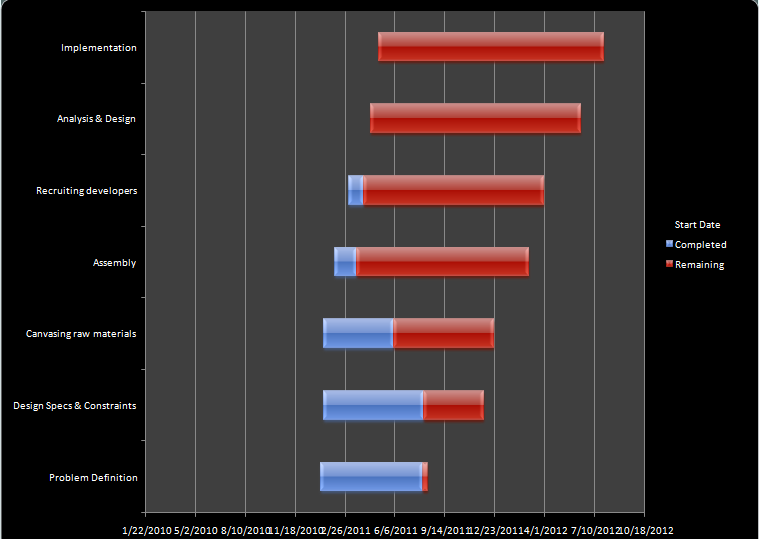
Skills required for implementation of the project
We required a combination of several skills in order for us to be able to accomplish our project. We needed programming skills and networking skills to program the program for the microcontroller and configuration of the GSM-kit respectively. We also needed management skills, project management skills and time management skills. For our group we were lucky to have all the skills from different people hence that was not a major challenge
From working on this project my team members and I learned a couple of skills when working with people of different character from yours. We learned to listen to each other during project meetings and we also learned to be patient with each other as we all had different opinions and points of view on how to approach different areas. It also brought us together in terms of socializing and we believe that we shall continue to come up with other better ideas for our future benefits.
Recommendations
However since situations of students wanting to communicate with their doctor but cannot find them are a common occurrence in most institutions. Previously doctors have been given pigeon holes where indirectly, it represents a post office in which the students write the doctor a handwritten note of what they wanted and leave it in the doctors’ pigeon hole. This method was not reliable as the documents could disappear or the doctor might forget to check their pigeon hole hence the student’s message will not the doctor
The other alternative was students slipping notes under the doctor’s offices door or through a hole that is left on the door. In this case chances of the message being lost or distorted were very high. By coming up with this project we believe we will be able to aid communication between students and their lectures. Flow of information around the college will be better.
These methods used earlier had the advantage of being cheaper and easy to implement. Despite the fact that our project is more effective it is quite costly to implement as one has to buy the equipment needed. These alternatives also did not require any training to be done to the users as it was used of mere common sense. Our project will require the students and the doctors to be taught how to use the new project.
Owing to the sustainability of our project we would like to recommend the use of this system to enhance communication between the doctor and students. It is also recommended that the school implements this project in order to facilitate communication. This project gives the doctors confidence that their students can text them but at the same time they are not scared that the same students have their numbers and could use them for malicious purposes. It is also recommended that due to the rate at which technology is advancing implementation of this project will help the institution to keep up with the evolving technology. It will also help do away with paper messages which are not quite reliable and clumsy. It will also promote the environmental conservation policies that have been put in place. We also recommend that once this project is implemented and runs effectively and efficiently it should be passed on to other institutions so that they can also share in the advantages.
Conclusion
With regard to the objectives our project is an alternative relevant solution. The goal is to provide a way for students to communicate to the doctor and yet maintain professionalism. Our project also has its own pros and cons. The major disadvantage is that the project is quite expensive and very complicated to implement, though is a one-time experience as the implementation process is only once and maintenance is not expensive at all. The other disadvantage is that some people may not be technologically competent hence there needs to be training which is also an expense on its own. Despite the few mentioned cons the advantages of the project outweigh the disadvantages. One of the greatest of all advantages is that it will simplify communication between the doctors and the students. It will help reduce clutter and a lot of paperwork in the doctors’ offices. It will also ensure that the message reaches the intended recipient hence it will be easier to investigate matters that are not attended to as there is evidence.
In conclusion during the development of this project we came to learn a couple of things. One teamwork is very important and should not be taken for granted; one should learn to be patient and to listen to other people’s points of view because as much as you may think you are right somebody else’s point could add value to your point. During a system development it is important to meet frequently as possible with the group members and not to forget to note important points that can be referred to later on. Working with different people with different backgrounds provides different insights into whatever project you are working on. We also shared the same conclusion which is the meeting of many minds brings about big workable ideas and when there are hindrances’ they are easily overcome together, as one.
However since situations of students wanting to communicate with their doctor but cannot find them are a common occurrence in most institutions. Previously doctors have been given pigeon holes where indirectly, it represents a post office in which the students write the doctor a handwritten note of what they wanted and leave it in the doctor’s pigeon hole. This method was not reliable as the documents could disappear or the doctor might forget to check their pigeon hole hence the student’s message will not the doctor
The other alternative was students slipping notes under the doctor’s offices door or through a hole that is left on the door. In this case chances of the message being lost or distorted were very high. By coming up with this project we believe we will be able to aid communication between students and their lectures. Flow of information around the college will be better.
These methods used earlier had the advantage of being cheaper and easy to implement. Even though our project is more effective it is quite costly to implement as one has to buy the equipment needed. These alternatives also did not require any training to be done to the users as it was used of mere common sense. Our project will require the students and the doctors to be taught how to use the new project.
Owing to the sustainability of our project we would like to recommend the use of this system to enhance communication between the doctor and students. It is also recommended that the school implements this project to facilitate communication. This project gives the doctors confidence that their students can text them but at the same time they are not scared that the same students have their numbers and could use them for malicious purposes. It is also recommended that due to the rate at which technology is advancing implementation of this project will help the institution to keep up with the evolving technology. It will also help do away with paper messages which are not quite reliable and clumsy. It will also promote the environmental conservation policies that have been put in place. We also recommend that once this project is implemented and runs effectively and efficiently it should be passed on to other institutions so that they can also share in the advantages.
This system is not necessarily the best possible solution but considering the rate at which technology is evolving it is a system that is worth implementing and would go a long way in improving the universities communication system. We are heading to a paperless world and it is a paperless system. However with this in mind, we can improve technology without damaging our planet.
Works Cited
Appleton, Brad. A Software Design Specification Template. Cmcrossroads, n.d.
“Datasheet archive.” Datasheetarchive.com. datasheet, n.p. 2010.
“Design Requirements and constraints.” Namahn.com. namahn, n.d. 2011.
Mikroelektronika. “PIC Microcontrollers.” BOOK: PIC Microcontrollers: n.d. n. pag.